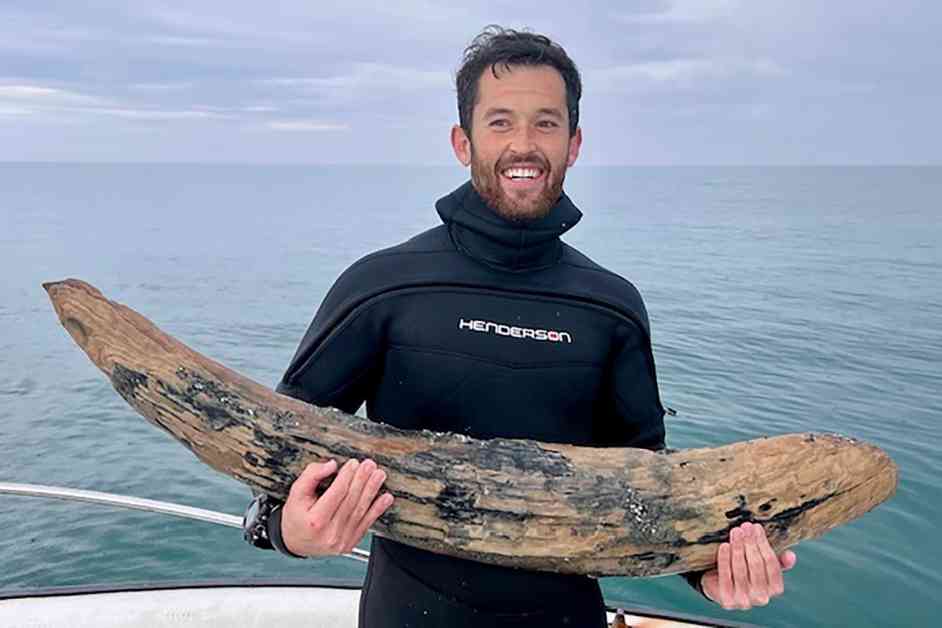A surprising discovery was made by a diver recently off the coast of Florida. Alex Lundberg, a fossil-hunting diver, came across what he initially thought was a piece of wood on the sea floor. However, upon closer inspection, he realized it was a large section of a tusk from a mastodon, a long-extinct creature related to mammoths and modern-day elephants.
This rare find, measuring about 4 feet in length and weighing 70 pounds, was found at a depth of 25 feet near Venice, Florida. Lundberg, along with his diving companion, has previously discovered fossils in the same area, including mammoth teeth, bones of an ancient jaguar, and parts of a dire wolf. While they had found small pieces of mastodon tusk before, this find was particularly significant due to its size and intact nature.
Mastodons are believed to have lived in North America millions of years ago and became extinct about 10,000 years ago. The discovery of mastodon remains is not uncommon, with fossils being found across the continent. In fact, Indiana legislators designated the mastodon as the state’s official fossil a few years ago.
Under Florida law, fossils of vertebrates found on state lands belong to the state and must be reported to the Florida Museum of Natural History. Lundberg, who holds a permit to collect such fossils, plans to report his discovery to the museum when his permit is renewed in December. The museum will then review the find to determine its significance.
Despite the potential importance of the discovery, Lundberg is hopeful that he will be able to keep the tusk. As a marine biology graduate and current cancer center worker, he views the tusk as a unique and fascinating piece that has been preserved in the ocean for millions of years. The age of the tusk has yet to be determined, adding to the mystery and intrigue surrounding this rare find.




